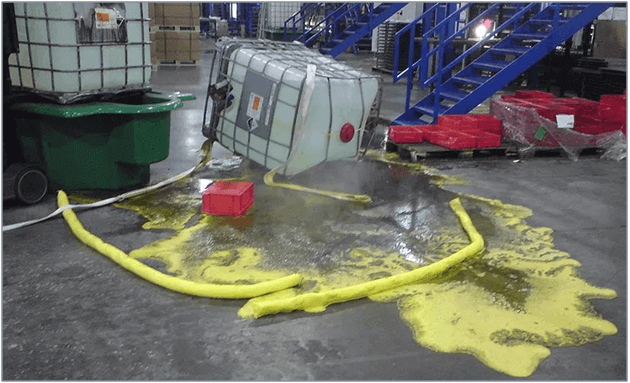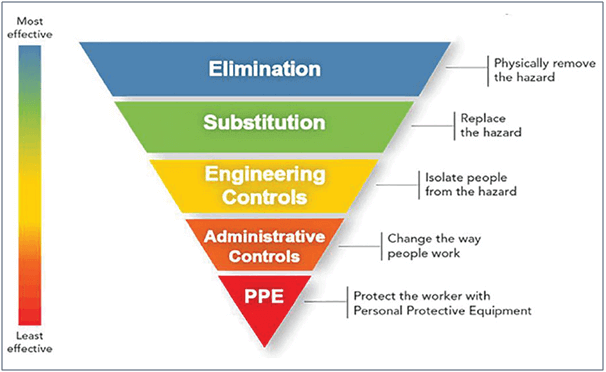Hazardous chemicals are substances, mixtures or articles that pose a significant threat to the environmental, health, and safety well-being of workers if they are not managed in a safe and compliant manner. In regard to chemical hazards, it consists of an inherent set of properties that are associated with the chemical that could cause adverse effects to organisms or the environment.
There are two main types of hazards associated with hazardous chemicals. The basic two main categories of hazards are defined as health hazards and physicochemical hazards. These hazards may present immediate or long-term illness or injury to people.
Table of Contents
Health Risks from Hazardous Chemicals
These are hazards with properties that have the potential to cause harm to human health. Exposure to hazardous chemical can cause harm to human health. There are three main routes of exposure. These routes of exposure include inhalation, ingestion and skin contact. Exposure to hazardous chemicals can lead to short-term (acute) and long-term (chronic) effects. Some short-term effects include nausea, skin corrosion and vomiting, while long-term effects can include asthma, nerve-damage and cancer.
Physiochemical Risks from Hazardous Chemicals
Physiochemical hazards are the chemical and physical properties of hazardous chemicals that pose risks upon workers aside from health risks. These hazards are not the results of the biological interaction of the hazardous chemical with people. Physicochemical hazards arise as a result of incorrect handling, storage and use of hazardous chemicals. These hazards include explosive, flammable, corrosive, spontaneously combustible, oxidizing and water reactive chemicals.

Need for Methodology to Mitigate Risks
As hazardous chemicals would pose significant risks upon the employees and property of any workplace, it is very important that these are best manage in a safe and compliant manner. Hazardous chemicals pose many risks upon the people, property and environment of any workplace and it is very important that an organization have a methodical risk management process in place to mitigate the risks associated with hazardous chemicals.
Identifying the Hazardous Substances
First and foremost, an organization should always seek in compliance with their country regulatory boards prior to any import or storage of any hazardous chemicals. Always ensure to check the material safety data sheet, which provides vital information such as the hazards properties and specific storage conditions to be adhere accordingly. The physical goods itself must be well packaged, with their GHS labels properly detailing the product classifications, hazards and the safe handling procedures.

Assessing the Risk Factors
Once all the potential hazards associated with the hazardous chemicals stored in your workplace have been identified, a risk assessment may then be carried out.A risk assessment is a systematic approach to identifying how the storage of hazardous chemicals could harm the people, property and the environment of your organization. The following list is a non-exhaustive examples of inadequate storage systems or practices commonly found in chemical storage warehouses:
- Absence of a suitable vehicle and pedestrian traffic management plan with defined MHE routes and speed limits
- Emergency exits are obstructed
- Chemicals are stored improperly on passageways such as MHE routes, pedestrian footpaths etc.
- Chemicals are stored on damaged, or inadequately secured racks or damaged pallets
- Inadequate ventilation or direct exposed to sun, excessive heat or sources of ignitions
- Chemicals are poorly stored in segregation by categories
- Absences of spillage containment or spill kits
Risk Control Measures
Once all the risk level have been assessed for each location where hazardous chemicals are stored at the workplace, a well detailed plan must be developed to reduce the risks by implementing the necessary controls. The control measures must be implemented in a strict order as shown in the hierarchy of control levels.

- Elimination – Use a physical process instead of usage of chemicals
- Substitution – Use a safer chemical or a safer form of solutions
- Isolation – Separate people or property from the chemical by distance or barriers
- Engineering – Design buildings or compartments compatible with the intended chemicals and bunding to contain spillage
- Administration – Incorporate safe work practices and good housekeeping, employer training and awareness
- PPE – Provide protective safety equipment for employees and visitors when working with chemicals
It is always a good practice to carry out another risk assessment to analyze the success of the implemented controls. The risk assessment should be recorded on the same risk management matrix that was used for the initial risk assessment so that it could be further use for improvements at a later stage.
The full content is only visible to SIPMM members
Already a member? Please Login to continue reading.
References
Amran Hossain, DLSM. (2019). “Key considerations for Warehousing Safety and Health”. Retrieved from SIPMM: https://publication.sipmm.edu.sg/key-considerations-warehouse-safety-health, accessed 06/12/2020.
David Chew Kian Peng, DLSM. (2019) “Four Key Areas for Mitigating Warehouse Risks”. Retrieved from SIPMM: https://publication.sipmm.edu.sg/four-key-areas-mitigating-warehouse-risks/, accessed 01/12/2020.
Mohammad Ihsan bin Othman, DLSM. (2019). “Critical Factors for Transporting and Storing Dangerous Goods”. Retrieved from SIPMM: https://publication.sipmm.edu.sg/critical-factors-transporting-storing-dangerous-goods/, accessed 06/12/2020.
SIPMM LPS 304 Module Guide. (2020). “Workplace Safety and Health Act- Roles and Responsibilities”. Retrieved from SIPMM LPS304 Warehouse Management Topic 5, accessed 01/12/2020.

